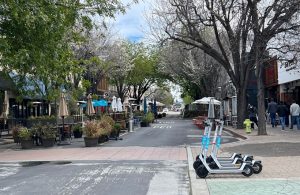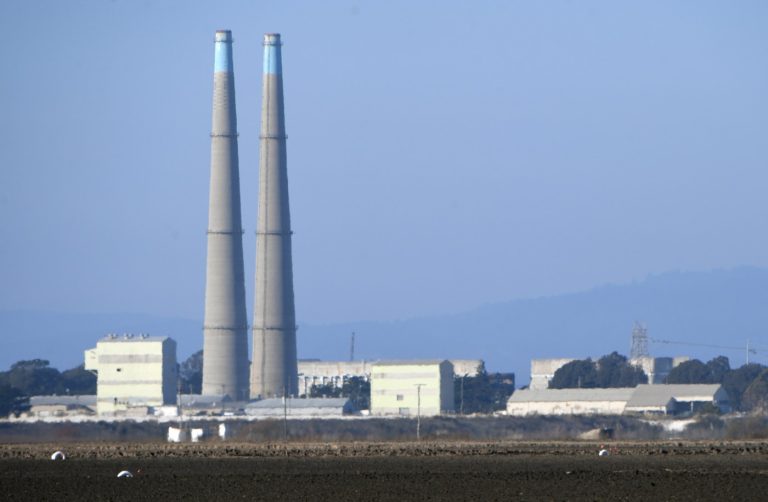San Jose’s $5.3 billion budget for 2024-25, proposed by Mayor Matt Mahan, shows the city tightening its belt as it prepares to shell out $27 million in the next year to clear homeless encampments from its waterways to comply with the Clean Water Act.
That $27 million, plus a number of other one-time programs, produced a deficit of $50 million — to be balanced by cutting 64 vacant city positions and reducing spending on affordable housing from last year. Mahan said this is the city’s best option and one that avoids scaling back essential services like the police and fire department, library hours or park maintenance.
“I’m optimistic that we will be able to meet our obligations under the Clean Water Act, continue to fund affordable housing at a meaningful scale and protect core services without any layoffs in this year’s budget,” Mahan told this news organization.
The proposal must still be voted on by the City Council this coming June.
The council is likely to rehash much of last year’s budget debate over how to spend funds from Measure E, a voter-approved tax on real estate transfers over $2 million, which Mahan is once again pushing to reallocate from affordable housing toward interim housing. The tax is expected to bring in $50 million this year.
The budget proposes spending $15 million from Measure E to develop alternative sleeping sites for 500 unhoused people currently living along the city’s waterways, which it must do by June 2025 under a state mandate from the San Francisco Bay Regional Water Quality Control Board. If it doesn’t, the city could risk tens of thousands of dollars in daily fines.
That would leave $11 million in Measure E funds for affordable housing, for a total of $41 million, which would provide enough for the construction of around 164 new units.
But there’s a big if — that $41 million banks on the city securing external state grants. If it does not, the amount for affordable housing would drop to $21.6 million, or enough for 86 units. Either scenario would be less than last year’s $50 million dedicated to affordable housing. Meanwhile, the city has a backlog of $200 million in affordable projects awaiting funding.
Critics of the mayor’s approach to homelessness are concerned about the continued shift of dollars away from permanent housing.
“We are diverting resources originally dedicated to affordable housing, and we know there are real projects that would be ready to go if they got this funding,” said Ray Bramson, chief operating officer of Destination: Home, a nonprofit working to prevent homelessness. “This big of a shift doesn’t make sense.”
But Mahan defended the spending on interim housing, especially in light of the looming state deadline.
“That’s really non-negotiable — we cannot be in violation of the Clean Water Act or they can sue us into oblivion,” Mahan said, adding that the city is still budgeting more for permanent affordable housing than interim housing like safe parking sites. “We have to be willing… to be flexible with the Measure E dollars and find other sources of funding for affordable housing.”
The budget also calls for the elimination of 64 vacant positions. No layoffs are anticipated, Mahan said, denying earlier reports that the city would have to cut a small number of jobs to achieve a balanced budget.
The hiring freeze would come after a year in which San Jose has added 200 full-time employees, bringing the total city staff up to 7,000. Still, some of the city’s union members worry that cutting vacant positions could result in longer-term reductions in services.
“Staffing up San Jose has made a big impact for San Jose residents, and they’re noticing the difference in the services the city can provide,” said arborist and IFPTE Local 21 union member Nara Baker, citing city survey data that shows an increase in the quality of interactions with staff as the city adds employees.
Related Articles
Letters: Quality of life | DA’s rights | Fixing Oakland | Rein in Musk | Expansion in Mideast
Audit: San Jose failed to adequately track $300 million in homelessness spending
New California bill proposes lowering school speed limits to 20 mph
Controversial policy on inviting parents to kids’ abuse interviews vanishes from Santa Clara County website
What were the Bay Area’s most expensive March primary races?
Mahan said some positions would be moved laterally across the city, to avoid layoffs. That includes beefing up the city’s homelessness outreach teams, as part of the work to clear encampments from waterways.
While the city has put forth a balanced budget for this upcoming fiscal year, officials predict deficits over the next five years as revenue growth slows and the cost of labor rises. Last year, the city approved a three year labor contract giving most city employees an immediate 6% raise, plus a 5% raise this year and another wage hike of at least 3.5% next year.
“I don’t ever want to be in a position of committing to salary increases that outstrip our revenue growth, because that then forces us into a position where we have to cut services and lay folks off,” said Mahan, who opposed the contract. “This year, we’re able to manage it and balance competing needs. I’m a little more worried about next year.”












